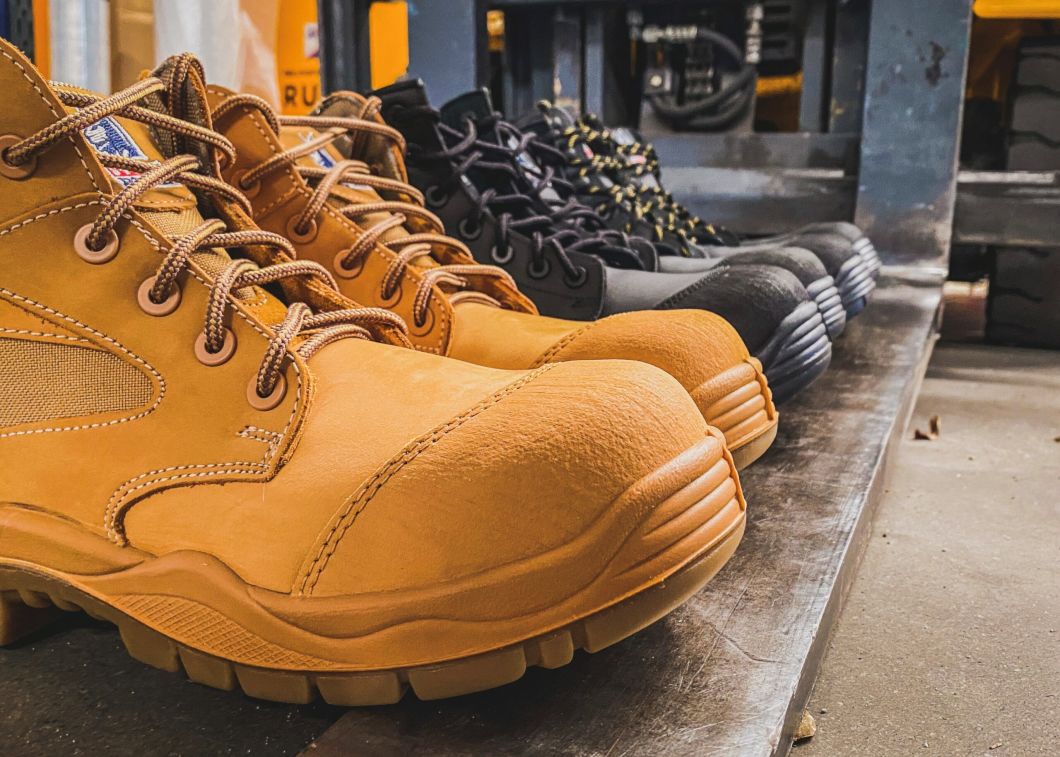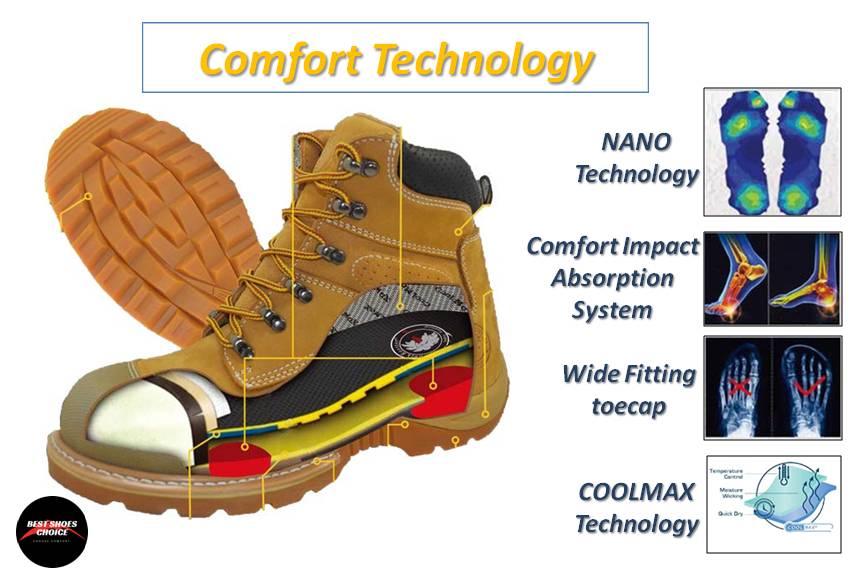Protecting Your Feet: The Lowdown on Composite Toe Boots
What Makes a Composite Toe Different?
When it comes to protective footwear, understanding the differences between various toe cap materials is crucial. So, what is a composite toe on a boot? A composite toe is a type of toe cap made from a combination of materials, such as carbon fiber, Kevlar, and fiberglass, which are bonded together to create a strong and lightweight structure. This innovative design provides several benefits over traditional steel toe boots, including reduced weight, increased flexibility, and improved comfort. Composite toe boots are also often more breathable and moisture-wicking, making them ideal for workers who spend long hours on their feet. While steel toe boots are still a popular choice, composite toe boots offer a unique set of advantages that make them an attractive option for many industries.
How to Choose the Right Composite Toe Boot for Your Job
Selecting the appropriate composite toe boot for your job can be a daunting task, especially with the numerous options available in the market. To make an informed decision, it’s essential to consider several factors, including the hazard levels, work environments, and personal preferences. For instance, workers in the construction industry may require boots with a higher level of impact resistance, while those in the manufacturing sector may prioritize boots with superior slip resistance. Additionally, individuals with specific foot conditions or preferences may need boots with customized features, such as orthotics or breathable materials. By understanding the unique demands of your job and identifying your specific needs, you can choose a composite toe boot that provides optimal protection, comfort, and performance.
The Anatomy of a Composite Toe: Understanding the Materials and Construction
At the heart of a composite toe boot lies a complex structure of materials, carefully designed to provide protection and support. So, what is a composite toe on a boot? It’s a combination of advanced materials, such as carbon fiber, Kevlar, and fiberglass, which are bonded together to create a strong and lightweight structure. The manufacturing process involves layering these materials to achieve the desired level of protection, flexibility, and comfort. For instance, carbon fiber provides exceptional strength-to-weight ratio, while Kevlar adds an extra layer of impact resistance. Fiberglass, on the other hand, enhances the boot’s overall durability and resistance to corrosion. By understanding the composition and construction of composite toe boots, workers can appreciate the science behind their safety and performance.
Composite Toe vs. Steel Toe: A Comparison of Safety Features
When it comes to foot protection, two types of boots stand out: composite toe and steel toe. While both offer protection, they differ significantly in terms of materials, weight, and comfort. So, what is a composite toe on a boot? In contrast to steel toe boots, composite toe boots are made from advanced materials like carbon fiber, Kevlar, and fiberglass, which provide exceptional strength-to-weight ratio and flexibility. Steel toe boots, on the other hand, rely on a steel cap to protect the toes. While steel toe boots are often heavier and more durable, composite toe boots offer superior comfort and flexibility. In terms of protection, both types of boots meet or exceed safety standards, but composite toe boots are often preferred in hazardous work environments where comfort and agility are crucial. Ultimately, the choice between composite toe and steel toe boots depends on individual needs and preferences, but understanding the differences between these two options can help workers make informed decisions about their foot protection.
Real-World Applications: Industries That Benefit from Composite Toe Boots
Composite toe boots have become an essential component of personal protective equipment (PPE) in various industries where foot protection is paramount. From construction sites to manufacturing facilities, and from oil and gas rigs to warehouses, composite toe boots provide protection and support in hazardous work environments. In the construction industry, for instance, composite toe boots are ideal for workers who need to navigate rough terrain, climb ladders, and handle heavy materials. The lightweight and flexible design of composite toe boots enables workers to move freely and comfortably, reducing fatigue and improving productivity. In manufacturing, composite toe boots are often preferred due to their ability to withstand the rigors of heavy machinery and equipment. Similarly, in the oil and gas industry, composite toe boots provide protection against hazardous chemicals and extreme temperatures. By understanding the specific needs of each industry, workers can choose the right composite toe boot for their job, ensuring they remain safe and protected on the job site. Whether it’s a question of what is a composite toe on a boot or how it can benefit their work, workers in these industries can rely on composite toe boots to provide the protection and support they need.
Debunking Common Myths About Composite Toe Boots
Despite their growing popularity, composite toe boots are often misunderstood, and several myths surround their performance and protection. One common misconception is that composite toe boots lack the protection and durability of steel toe boots. However, this couldn’t be further from the truth. Composite toe boots are designed to meet or exceed the same safety standards as steel toe boots, and their advanced materials provide exceptional strength-to-weight ratio and flexibility. Another myth is that composite toe boots are more prone to damage or degradation over time. In reality, composite toe boots are designed to withstand the rigors of heavy use and harsh environments, and with proper maintenance and care, they can last just as long as steel toe boots. Some people also believe that composite toe boots are less comfortable or more expensive than steel toe boots. While it’s true that composite toe boots may have a higher upfront cost, their lightweight and flexible design can reduce fatigue and discomfort, making them a worthwhile investment for workers who need protection and support on the job. By understanding what is a composite toe on a boot and debunking these common myths, workers can make informed decisions about their foot protection and choose the best option for their needs.
Maintenance and Care: Tips for Extending the Life of Your Composite Toe Boots
To ensure that your composite toe boots remain effective and safe over time, it’s essential to properly maintain and care for them. Regular cleaning is crucial to prevent the buildup of dirt and debris that can compromise the boot’s protective properties. Use a soft-bristled brush to remove loose dirt and debris, and then wipe the boots down with a damp cloth. Avoid using harsh chemicals or abrasive cleaners, as they can damage the composite materials. When storing your composite toe boots, keep them in a cool, dry place away from direct sunlight. This will help prevent the materials from degrading over time. It’s also essential to inspect your boots regularly for signs of wear and damage, such as cracks, dents, or worn-out soles. By catching these issues early, you can extend the life of your boots and ensure they continue to provide the protection and support you need. Additionally, understanding what is a composite toe on a boot and its construction can help you better maintain and care for your boots. By following these simple tips, you can get the most out of your composite toe boots and keep your feet safe and protected on the job.
The Future of Foot Protection: Advancements in Composite Toe Technology
The composite toe boot industry is constantly evolving, with ongoing innovations and advancements in technology that are enhancing the safety and performance of these boots. One of the most significant developments is the introduction of new materials, such as advanced carbon fiber and Kevlar blends, which offer improved strength-to-weight ratios and enhanced protection. Additionally, manufacturers are incorporating innovative designs and features, such as breathable membranes and ergonomic soles, to improve comfort and reduce fatigue. Another area of focus is the integration of smart technology, such as sensors and tracking devices, to provide real-time feedback on foot health and safety. Furthermore, researchers are exploring the use of sustainable materials and production methods to reduce the environmental impact of composite toe boots. As the industry continues to push the boundaries of what is possible with composite toe technology, workers can expect to see even more advanced and effective foot protection solutions in the future. Understanding what is a composite toe on a boot and its evolution will help workers make informed decisions about their foot protection. With these advancements, composite toe boots are poised to remain a vital component of workplace safety for years to come.






